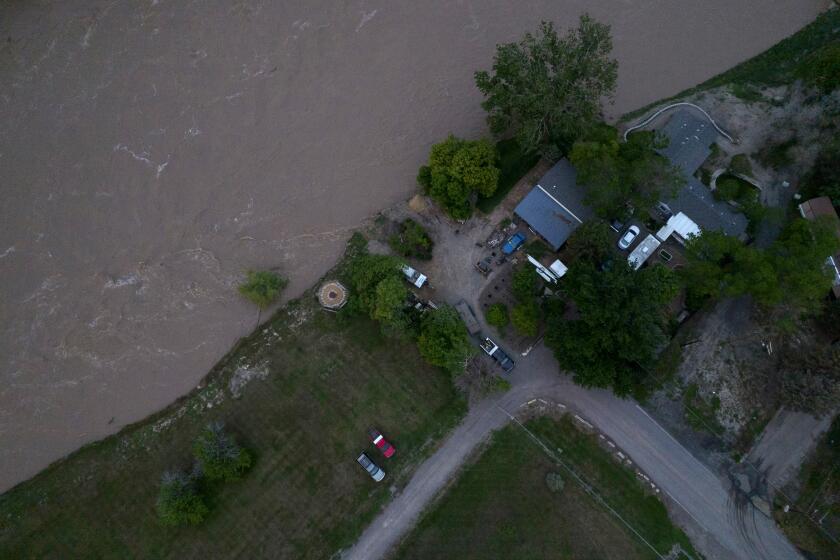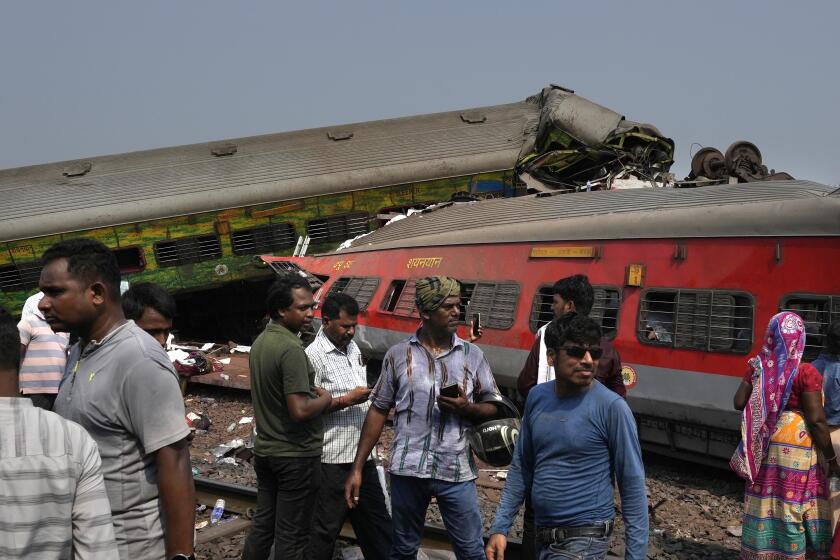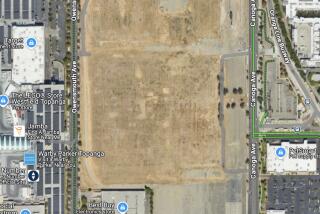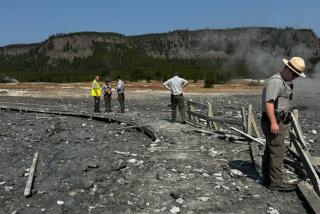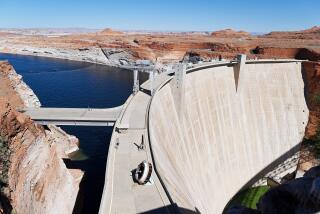No sign of air or water threat from train plunge into Yellowstone River, officials say
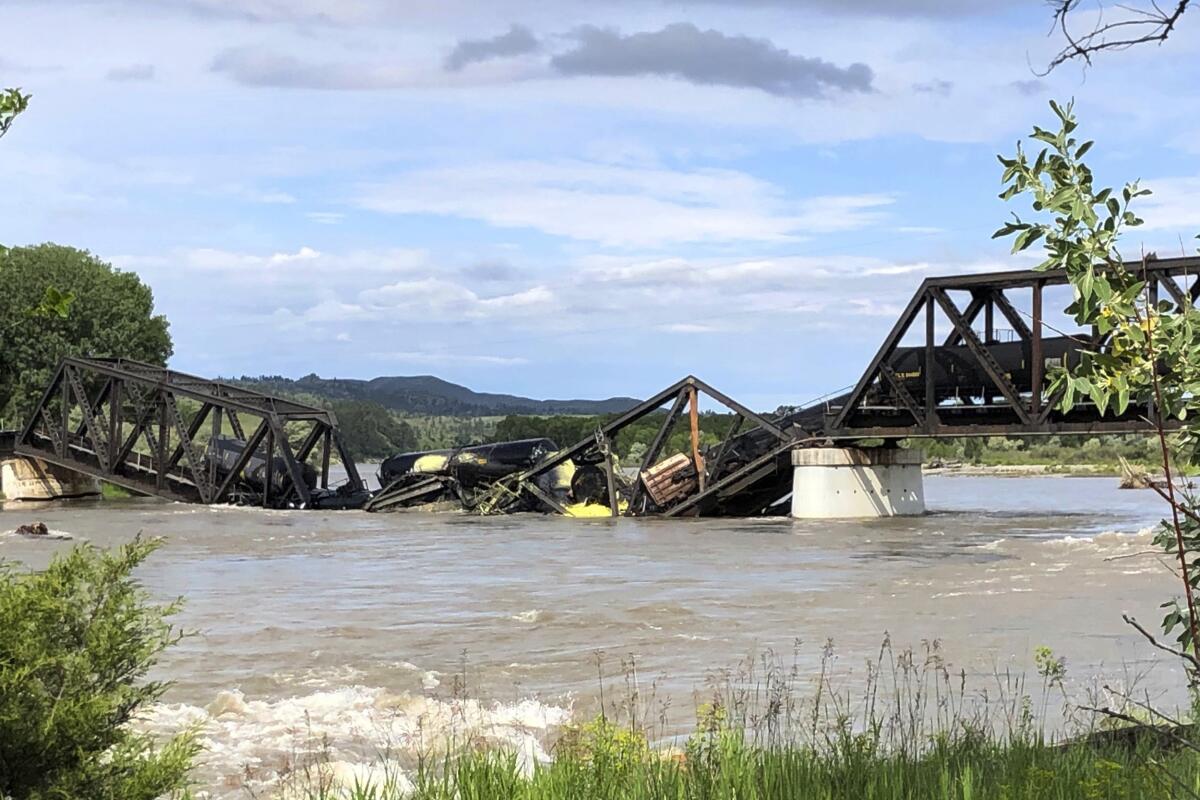
- Share via
COLUMBUS, Mont. — Preliminary testing of water and air quality along a stretch of the Yellowstone River where train cars with hazardous materials tumbled in following a bridge collapse did not indicate any threat to the public, officials said Sunday.
The seven mangled cars carrying hot asphalt and molten sulfur remained in the rushing river a day after the bridge gave way near the town of Columbus, Mont., about 40 miles west of Billings. The area is in a sparsely populated section of the Yellowstone River Valley, surrounded by ranch and farmland.
Preliminary results of water quality sampling did not show petroleum hydrocarbons, which would have come from the asphalt, or sulfur, said Kevin Stone, a spokesperson for the Montana Department of Environmental Quality. Neither dissolves upon entering water, he said.
“Water-quality testing will continue until the cleanup is complete, and at this time there are no known risks to the public drinking water,” he said.
The water testing is being done by contractors working for the train’s operator, Montana Rail Link, while the Montana Department of Environmental Quality and the federal Environmental Protection Agency are overseeing it, Stone said.
Meanwhile, contractors monitoring the air downwind of the derailment for the EPA have not detected any toxic gases, said Rich Mylott, a spokesperson for the agency’s regional office.
Floodwaters that swept through Yellowstone National Park may have permanently altered the course of a fishing river and forever changed the landscape.
Water testing began Saturday and will continue throughout the cleanup of the derailment site, Montana Rail Link spokesperson Andy Garland said in a statement.
“Montana Rail Link remains committed to addressing any potential impacts to the area as a result of this incident,” he said.
The amount of cargo that spilled from the cars in the river is still not known, said David Stamey, the head of Stillwater County Disaster and Emergency Services.
Garland said both hot asphalt and molten sulfur harden and solidify quickly when mixed with water, and modeling suggests that the substances are not likely to move very far downstream.
The massive derailment involving two passenger trains is a stark reminder of safety issues that continue to challenge the vast railway system that transports nearly 22 million passengers each day.
Crews were still trying to figure out the best way to remove the railway cars since the crash was so extensive and there was a lot of damage to them, Stamey said.
The Federal Railroad Administration was leading the investigation into the cause of the derailment but did not have any preliminary information about the probe to share, spokesperson Daniel Griffin said.
The bridge collapse also took out a fiber-optic cable providing internet service to many customers in the state, the high-speed provider Global Net said. It was still providing service via a backup route, but some users did not have service or were experiencing very slow connections Sunday, the company said in a recorded update on its phone line.
The Yellowstone saw record flooding in 2022 that caused extensive damage to Yellowstone National Park and adjacent towns in Montana. The river where the bridge collapsed flows away from Yellowstone National Park, which is about 110 miles southwest.
Start your day right
Sign up for Essential California for the L.A. Times biggest news, features and recommendations in your inbox six days a week.
You may occasionally receive promotional content from the Los Angeles Times.
Robert Bea, a retired engineering professor at UC Berkeley who has analyzed the causes of hundreds of major disasters, said repeated years of heavy river flows provided a clue to the possible cause.
“The high water flow translates to high forces acting directly on the pier and, importantly, on the river bottom,” Bea said Saturday. “You can have erosion or scour that removes support from the foundation. High forces translate to a high likelihood of a structural or foundation failure that could act as a trigger to initiate the accident.”
An old highway bridge that paralleled the railroad bridge — together, they were called the Twin Bridges — was removed in 2021 after the Montana Department of Transportation determined it to be in imminent danger of falling. The railroad bridge is inspected twice a year, and the most recent inspection was performed in May, Garland said.
The Federal Railroad Administration will review the inspection reports to see if they complied with federal safety standards, Griffin said.
More to Read
Sign up for Essential California
The most important California stories and recommendations in your inbox every morning.
You may occasionally receive promotional content from the Los Angeles Times.
